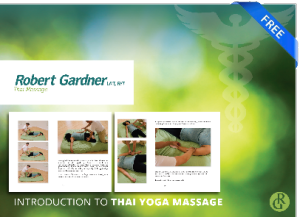Low Back Pain
Low back pain is one of the areas that Thai massage excels at providing relief. In my 11 years experience nothing provides such consistent results other than a regular yoga practice, fortunately I do both.
The complex interplay between hips, pelvic bowl, sacrum, lumbar spine and all the musculature involded means it’s hard to pinpoint exactly what every back pain in the area comes from. The psoas is often involved from being shortened and the hamstrings often pull the lumbar spine towards flat back. Long term these are bad, in the short term you feel stiff and immobile.
I started using the Ma roller in a more advanced way to help clients help themselves at home. Thai massage has me doing these sacral movements and stretches for you but the Ma roller allows you to work on yourself. Notice the lumbar flexion or flat back then the lumbar extension or temporary lordosis we create. You’re stretching and pressing into some of the deeper structures at the base of your spine and if you’re like most of my clients, your back pain will get better.
Go slow, breathe and keep moving. I’ll see you soon for a Thai massage session or class.

